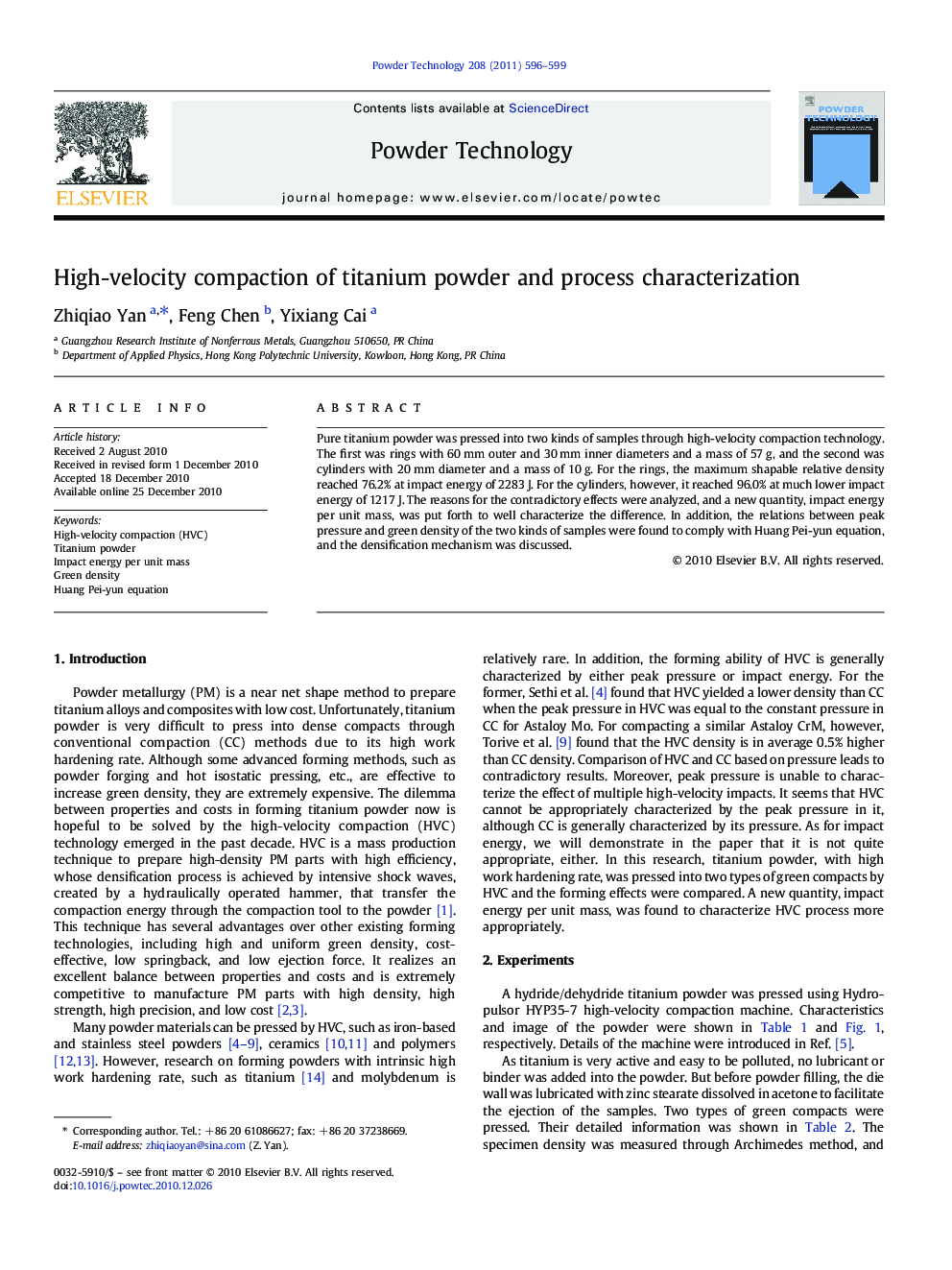| Article ID | Journal | Published Year | Pages | File Type |
|---|---|---|---|---|
| 237590 | Powder Technology | 2011 | 4 Pages |
Pure titanium powder was pressed into two kinds of samples through high-velocity compaction technology. The first was rings with 60 mm outer and 30 mm inner diameters and a mass of 57 g, and the second was cylinders with 20 mm diameter and a mass of 10 g. For the rings, the maximum shapable relative density reached 76.2% at impact energy of 2283 J. For the cylinders, however, it reached 96.0% at much lower impact energy of 1217 J. The reasons for the contradictory effects were analyzed, and a new quantity, impact energy per unit mass, was put forth to well characterize the difference. In addition, the relations between peak pressure and green density of the two kinds of samples were found to comply with Huang Pei-yun equation, and the densification mechanism was discussed.
Graphical AbstractThe forming ability of high-velocity compaction (HVC) technology is related with impact energy and powder filling amount. Impact energy per unit mass, defined as dividing the impact energy by the powder filling amount, is thus put forward. The concept is more suitable to characterize the features of HVC technology than conventional impact energy.Figure optionsDownload full-size imageDownload as PowerPoint slideResearch Highlights► Forming effect of pure titanium powder by HVC technology was studied. ► Forming ability of HVC could be characterized by impact energy per unit mass. ► 96.0% relative density was obtained at impact energy per unit mass of 121.7 J/g.
